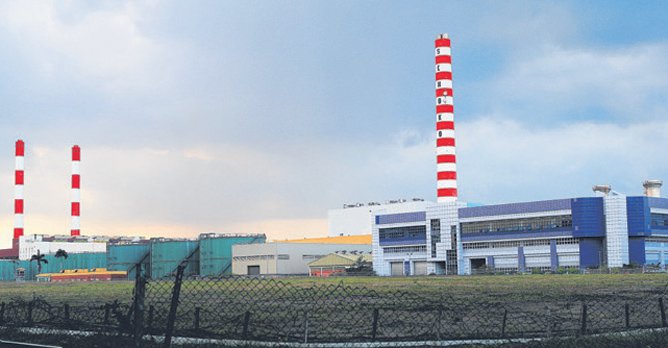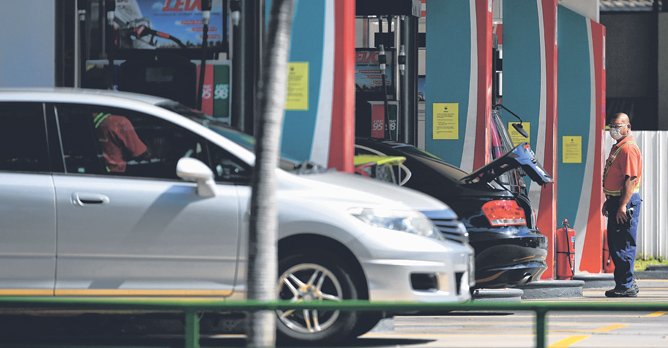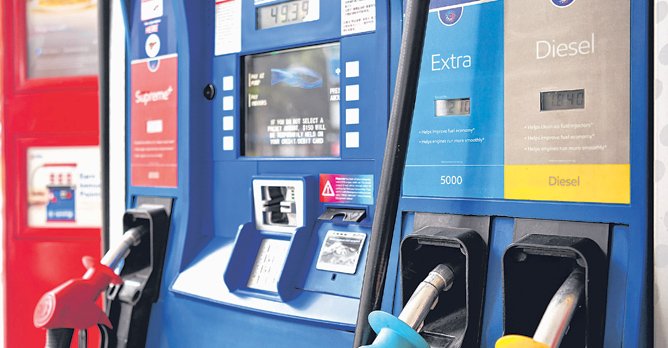Industry consultant expects fuel prices below $2 a litre next month
22 Apr 2020|646 views
Fuel pump prices are likely to fall in the coming days, although motorists are unlikely to see their bills shrinking by as much as the plunge in crude prices.
According to Bloomberg, a barrel of West Texas Intermediate (WTI) crude was at a record low of minus U.S $0.76 as at 5:00pm Singapore time, while Brent was at U.S $22.03 - down from U.S $24.49 and U.S $27.39 respectively a month ago, and around U.S $66 and U.S $74 respectively 12 months ago.
Despite that, pump prices here have remained stable. According to Fuel Kaki, a Consumers Association of Singapore portal which tracks fuel prices, 92-and 95-octane petrol are listed at $2.05 and $2.09 a litre respectively across all brands.
These prices, before discounts, have remained unchanged since 25 March 2020. A litre of 98-octane is listed at between $2.43 and $2.69, while diesel is between $1.69 and $1.72.
Oil Industry Consultant Ong Eng Tong said pump prices should test the $2 level by next month, with 92-octane falling below $2 - a level not seen since 2016.
The oil companies have to do something because a slowdown in demand is causing a storage problem," he said. "Otherwise, they will have to start giving it away free."
Motorists have long complained that pump prices often reflect an increase in oil prices quickly, but are slow to reflect drops. Mr. Jeremy Chua, Editor of online motoring magazine Torque, said, "There is no transparency in the pricing of petrol and diesel in Singapore. This is why time and time again, consumers accuse oil companies of collusion and cartel-like behaviour. Until transparent pricing is mandated, these accusations will continue."
In a Parliamentary sitting on 25 March 2020, Ms. Lee Bee Wah (Member of Parliament for Nee Soon GRC) asked if retail prices at petrol pumps reflected the plunge in crude oil rates, which had fallen sharply in earlier months.
Senior Parliamentary Secretary for Trade and Industry and Foreign Affairs Tan Wu Meng said retail petrol prices here had in fact fallen with the decline in crude oil prices.
He noted that between 2 January 2020 and 9 March 2020, oil prices had fallen from U.S $66 a barrel to U.S $34 a barrel, and that more than three-quarters of the drop was passed on to consumers.

Dr. Tan also cited a study on petrol prices in 2017 by the then Competition Commission of Singapore. It found that, on average, petrol prices took longer to go up when crude prices increased, compared with cuts when crude oil prices fell.
Meanwhile, gas and electricity tariffs have not changed significantly from a year ago. According to the Energy Market Authority (EMA), the general gas tariff for the April-to-June period is 17.11 cents per kWh, down from 17.23 cents in the January-to-March period, and 18.8 cents in the April-to-June period last year.
Domestic electricity is 24.62 cents per kWh for April, down from 25.94 cents in January. It was 24.39 cents in April last year. Natural gas is the main fuel for power generation here. The commodity is trading at U.S $1.93 per million British thermal units, down from U.S $2.52 a year ago.
An EMA spokesman said electricity and gas tariffs for each quarter are derived from average gas prices (which are indexed to oil prices) in the preceding 21/2 months, causing a lag in tariff changes. Also, fuel costs constitute about half of the tariff. "A 10% decrease in fuel costs, for example, would result in a tariff reduction of 5% to 5.5%, assuming non-fuel costs remain unchanged," he said.
Fuel pump prices are likely to fall in the coming days, although motorists are unlikely to see their bills shrinking by as much as the plunge in crude prices.
According to Bloomberg, a barrel of West Texas Intermediate (WTI) crude was at a record low of minus U.S $0.76 as at 5:00pm Singapore time, while Brent was at U.S $22.03 - down from U.S $24.49 and U.S $27.39 respectively a month ago, and around U.S $66 and U.S $74 respectively 12 months ago.
Despite that, pump prices here have remained stable. According to Fuel Kaki, a Consumers Association of Singapore portal which tracks fuel prices, 92-and 95-octane petrol are listed at $2.05 and $2.09 a litre respectively across all brands.
These prices, before discounts, have remained unchanged since 25 March 2020. A litre of 98-octane is listed at between $2.43 and $2.69, while diesel is between $1.69 and $1.72.
Oil Industry Consultant Ong Eng Tong said pump prices should test the $2 level by next month, with 92-octane falling below $2 - a level not seen since 2016.
The oil companies have to do something because a slowdown in demand is causing a storage problem," he said. "Otherwise, they will have to start giving it away free."
Motorists have long complained that pump prices often reflect an increase in oil prices quickly, but are slow to reflect drops. Mr. Jeremy Chua, Editor of online motoring magazine Torque, said, "There is no transparency in the pricing of petrol and diesel in Singapore. This is why time and time again, consumers accuse oil companies of collusion and cartel-like behaviour. Until transparent pricing is mandated, these accusations will continue."
In a Parliamentary sitting on 25 March 2020, Ms. Lee Bee Wah (Member of Parliament for Nee Soon GRC) asked if retail prices at petrol pumps reflected the plunge in crude oil rates, which had fallen sharply in earlier months.
Senior Parliamentary Secretary for Trade and Industry and Foreign Affairs Tan Wu Meng said retail petrol prices here had in fact fallen with the decline in crude oil prices.
He noted that between 2 January 2020 and 9 March 2020, oil prices had fallen from U.S $66 a barrel to U.S $34 a barrel, and that more than three-quarters of the drop was passed on to consumers.

Dr. Tan also cited a study on petrol prices in 2017 by the then Competition Commission of Singapore. It found that, on average, petrol prices took longer to go up when crude prices increased, compared with cuts when crude oil prices fell.
Meanwhile, gas and electricity tariffs have not changed significantly from a year ago. According to the Energy Market Authority (EMA), the general gas tariff for the April-to-June period is 17.11 cents per kWh, down from 17.23 cents in the January-to-March period, and 18.8 cents in the April-to-June period last year.
Domestic electricity is 24.62 cents per kWh for April, down from 25.94 cents in January. It was 24.39 cents in April last year. Natural gas is the main fuel for power generation here. The commodity is trading at U.S $1.93 per million British thermal units, down from U.S $2.52 a year ago.
An EMA spokesman said electricity and gas tariffs for each quarter are derived from average gas prices (which are indexed to oil prices) in the preceding 21/2 months, causing a lag in tariff changes. Also, fuel costs constitute about half of the tariff. "A 10% decrease in fuel costs, for example, would result in a tariff reduction of 5% to 5.5%, assuming non-fuel costs remain unchanged," he said.
Latest COE Prices
May 2025 | 1st BIDDING
NEXT TENDER: 21 May 2025
CAT A$103,009
CAT B$119,890
CAT C$62,590
CAT E$118,889
View Full Results Thank You For Your Subscription.





















